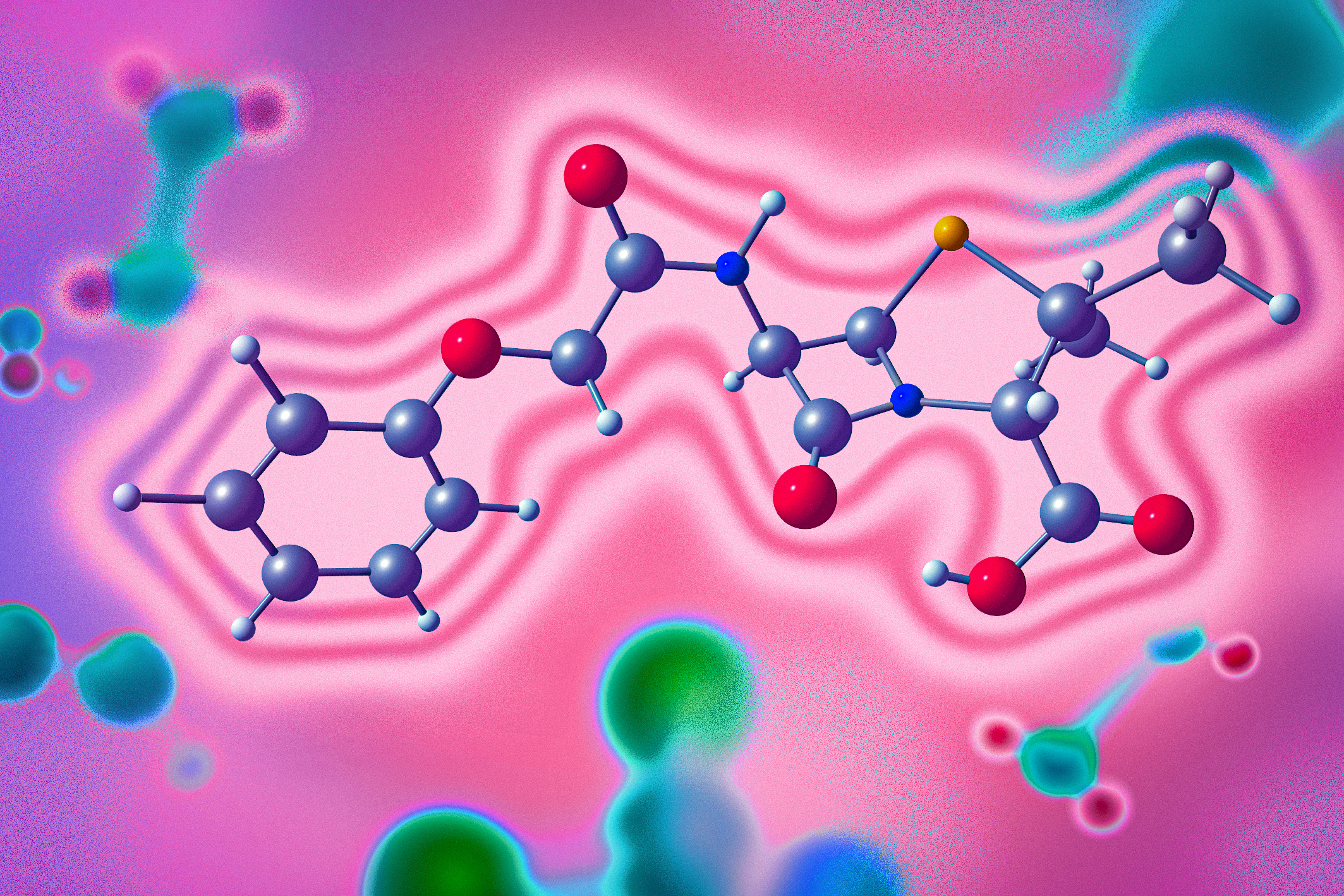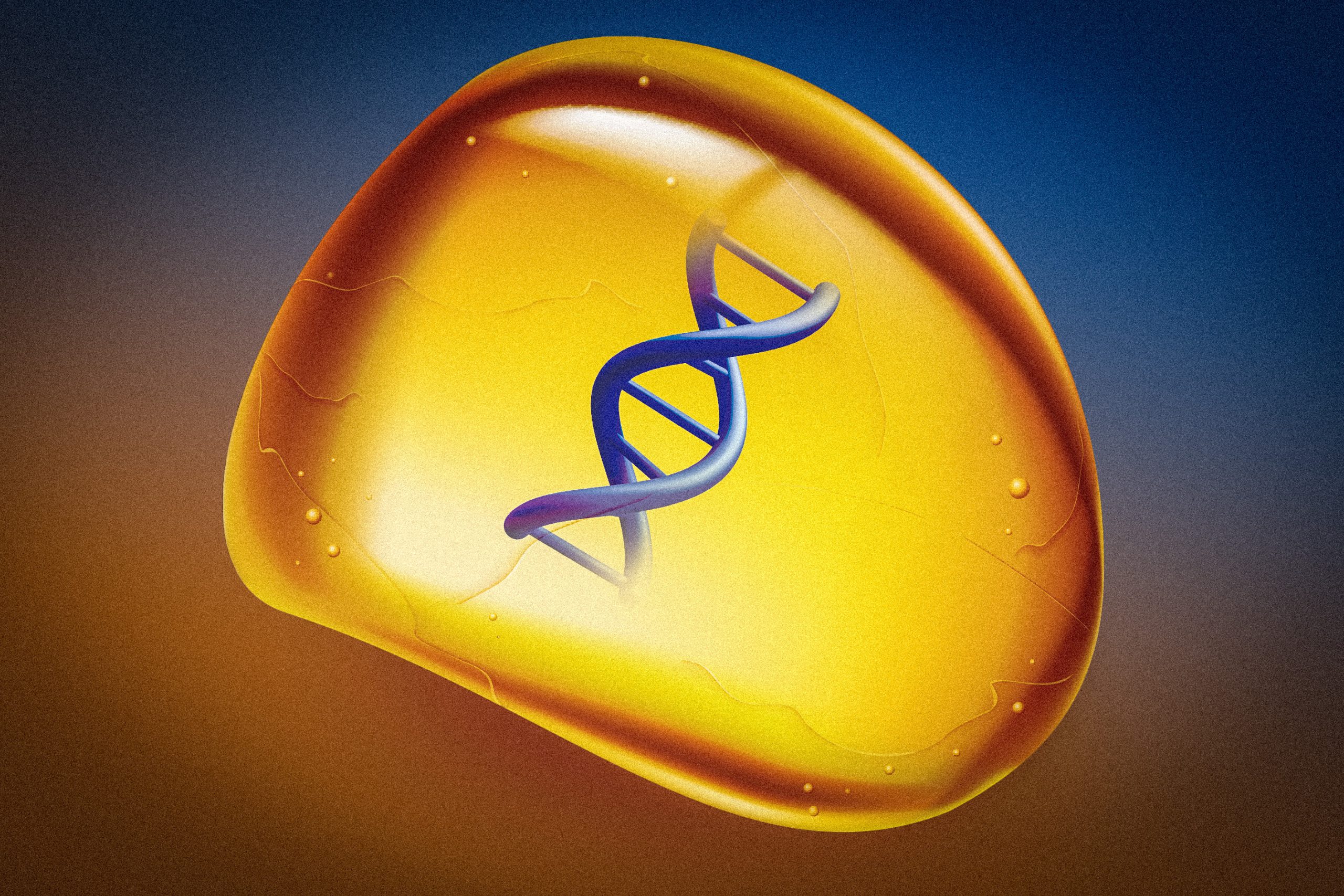Protein structure offers clues to drug-resistance mechanism
A new study sheds light on how a protein pumps toxic molecules out of bacterial cells.
MIT chemists have discovered the structure of a protein that can pump toxic molecules out of bacterial cells. Proteins similar to this one, which is found in E. coli, are believed to help bacteria become resistant to multiple antibiotics.
Using nuclear magnetic resonance (NMR) spectroscopy, the researchers were able to determine how the structure of this protein changes as a drug-like molecule moves through it. Knowledge of this detailed structure may make it possible to design drugs that could block these transport proteins and help resensitize drug-resistant bacteria to existing antibiotics, says Mei Hong, an MIT professor of chemistry.
“Knowing the structure of the drug-binding pocket of this protein, one might try to design competitors to these substrates, so that you could block the binding site and prevent the protein from removing antibiotics from the cell,” says Hong, who is the senior author of the paper.
MIT graduate student Alexander Shcherbakov is the lead author of the study, which appears today in Nature Communications. The research team also includes MIT graduate student Aurelio Dregni and two researchers from the University of Wisconsin at Madison: graduate student Peyton Spreacker and professor of biochemistry Katherine Henzler-Wildman.
Drug-resistance transporters
Pumping drugs out through their cell membranes is one of many strategies that bacteria can use to evade antibiotics. For several years, Henzler-Wildman’s group at the University of Wisconsin has been studying a membrane-bound protein called EmrE, which can transport many different toxic molecules, including herbicides and antimicrobial compounds.
EmrE belongs to a family of proteins called the small multidrug resistance (SMR) transporters. Although EmrE is not directly involved in resistance to antibiotics, other members of the family have been found in drug-resistant forms of Mycobacterium tuberculosis and Acinetobacter baumanii.
“The SMR transporters have high sequence conservation across key regions of the protein. EmrE is by far the best-studied member of the family, both in vitro and in vivo, which makes it an ideal model system to investigate the structure that supports SMR activity,” Henzler-Wildman says.
A few years ago, Hong’s lab developed a technique that allows researchers to use NMR to measure the distances between fluorine probes and hydrogen atoms in proteins. This makes it possible to determine the structure of a protein as it binds to a molecule that contains fluorine.
After Hong gave a talk about the new technique at a conference, Henzler-Wildman suggested that they team up to study EmrE. Her lab has spent many years studying how EmrE transports a drug-like molecule, or ligand, across the phospholipid membrane. This ligand, known as F4-TPP+, is a tetrahedral molecule with four fluorine atoms attached to it, one at each corner.
Using this ligand with Hong’s new NMR technique, the researchers set out to determine an atomic-resolution structure of EmrE. It was already known that each EmrE molecule contains four transmembrane helices that are roughly parallel. Two EmrE molecules assemble into a dimer, so that eight transmembrane helices form inner walls that interact with the ligand as it moves through the channel. Previous studies have revealed the overall topology of the helices, but not of the protein side chains that extend into the channel interior, which are like arms that grab the ligand and help guide it through the channel.
EmrE transports toxic molecules from the inside of a bacterial cell, which is at neutral pH, to the outside, which is acidic. This change in pH across the membrane affects the structure of EmrE. In a 2021 paper, Hong and Henzler-Wildman discovered the structure of the protein as it binds to F4-TPP+ in an acidic environment. In the new Nature Communications study, they analyzed the structure at a neutral pH, allowing them to determine how the structure of the protein changes as the pH changes.
A complete structure
At neutral pH, the researchers found in this study, the four helices that make up the channel are relatively parallel to one another, creating an opening that the ligand can easily enter. As the pH drops, moving toward the outside of the membrane, the helices begin to tilt so that the channel is more open toward the outside of the cell. This helps to push the ligand out of the channel. At the same time, several rings found in the protein side chains shift their orientation in a way that also helps to guide the ligand out of the channel.
The acidic end of the channel is also more welcoming to protons, which enter the channel and help it to open further, allowing the ligand to exit more easily.
“This paper really completes the story,” Hong says. “One structure is not enough. You need two, to figure out how a transporter can actually open to both sides of the membrane, because it’s supposed to pump the ligand or the antibiotic compound from inside the bacteria out of the bacteria.”
The EmrE channel is believed to transport many different toxic compounds, so Hong and her colleagues now plan to study how other molecules travel through the channel.
The research was funded by the National Institutes of Health and the MIT School of Science Camplan Fund.




